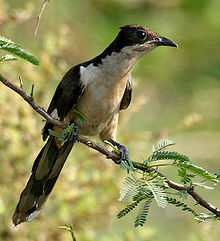Just the name of it plays sweet, soothing music in the hearts of lovers longing to meet each other; just the smell of water droplets touching the soil and mixing with it gives us the sense of satisfaction that Rain Gods are going to be there to satisfy the earth from the blazing, scorching, sun of the summer.
ORIGIN
The word monsoon originates from Arabic word “mausim” meaning the season in which certain winds prevail, which are, named from the places situated in the direction where they come from.
HISTORY
Monsoon and mythology have been quite related in the sense that the great poets in the Indian history have always portrayed lovers in exile in the backdrop of monsoon. One of such is the narration from the great Kalidasa, who has in “Meghadootam” (Cloud Messenger) narrated how the monsoon approaches and many love-struck hearts long to be with their beloved.
Mythologically, it goes like this — Long time back nearly at the time of Mahabharata there was a sage named as Ayan. Hetook brahmacharya and went into solitude to complete his tapasya (hermitism) in Himalayas. On the other side, there was a king name Kashiraj, a good ruler. He was blessed with a girl child who he named as Amba, but Kashiraj had always dreamt of having a boy, a prince, to rule his throne after him. So, he decided to bring up this girl child in disguise of boy so that no one should know that the child was a girl. But as the time passed by Amba reached the age of marriage, Kashiraj was in dilemma as how to face the consequence of revealing that Amba was not a boy but was a girl instead. At that point, Kashiraj approached to Yaksha (nature-spirit) and requested him to lend his male gender to the girl child “Amba“. Somehow Yaksha agreed upon and lent his male gender to Amba and in turn Yaksha himself turned into Yakshi “a female gender“.
Yakshi hid herself not able to reveal who she was and kept crying constantly in the clouds. The conversation between Yakshi and her wife was narrated by the great Kalidasa in “Meghadootam” (Cloud Messenger).
This Yakshi one day met the sage Ayan who was continuing his tapasaya in the Himalayas and to lighten her heart she told her story to sage Ayan. Ayan was deeply moved by the melancholy and dilemma of Yakshi and he decided to lend his male gender to Yakshi and he did it. Thereby the sage Ayan was turned into Ayani and remained the rest of her life as female and Yakshi again was turned into Yaksha.
CHATAK (Jacobin Cuckoo, Pied Cuckoo, or Pied Crested Cuckoo )
Chatak is a well known bird, also referred as Jacobin Cuckoo, Pied Cuckoo, or Pied Crested Cuckoo. This bird drinks water falling from sky. It does not drink at all from the water bodies on earth. It is a symbol of devotion, love, will, and strength. Great people give example of this bird and say the way it waits for the rains to come and quench its thirst is comparable to a sage doing his tapasya to please Gods. Unmoved by its determination of not drinking the water found on earth makes this bird more significant and a poised soul. With the sight of clouds in the sky it starts singing so as to please the Rain Gods to rain and quench the thirst of the earth as well as hers. In Hindi elders say “Bhakti karo to aisi, jo ho Chatak jaisi” means “show your love to god in such a way in which Chatak does“.
These birds are found in the Himalayas, Sahara in Africa, Myanmar, and some parts of Sri Lanka. They lay eggs in other birds nest and leave them there to hatch.
This bird has significance because it is thought that with the singing of Chatak and persuasion, the Rain Gods become happy and do the rains on the earth.
FOLKLORE – CURSE OF THE BUFFALO
There is a famous folklore associated with Chatak as to its origin, but how much it is true I do not know. It goes like this — Once there was an old woman who had a daughter. They lived in a small village. They used to provide milk to the villagers. Everyday the old woman would take the buffalo for grazing and to drink water from the pond. The daughter on the other hand was very lazy. She did not do a single thing to help her mother. Whole day she would just lay around or play with friends.
One day the old woman was very ill, so she called the daughter and told her to take the buffalo for grazing. She gave the girl some sweets so that she would not feel hungry en route.
Daughter took the buffalo in the jungle where her mother used to take, but instead of grazing she tied the buffalo to a tree and sat in the shade eating sweets. Buffalo was thinking in the mind that when this girl would finish sweets and let me allow to graze and quench my thirst as she was very thirsty, but the girl instead of releasing the buffalo took back home without grazing.
When they reached home back, her mother asked has the buffalo finished with the grazing and drinking water. At that point, the daughter lied to mother saying, “Yes, she ate a lot and drank too.” The buffalo got very much angry and cursed the girl that she in the next birth will become Chatak and feel the same way as the buffalo has felt. The girl wept and begged for mercy. Buffalo was kind and said that you will not be able to drink water from the earth and only you can drink is the water which falls from the sky and hence it was done. Thereafter the Chatak could only drink the water which was from the sky — i.e., rains.
Monsoon is what people wait for whole year, for crops to grow, for new life, for satisfaction, peace, and prosperity. It has its own significance, a whole life cycle revolving around the water. Still the cuckoos are out chirping and singing, clouds have surrounded, thunders are on, will this time they will be able to please the Rain Gods ?



Appropriately compared the mythological thinking with monsoon LOVE effect. Very Good.
Thank you Mr. Layal..